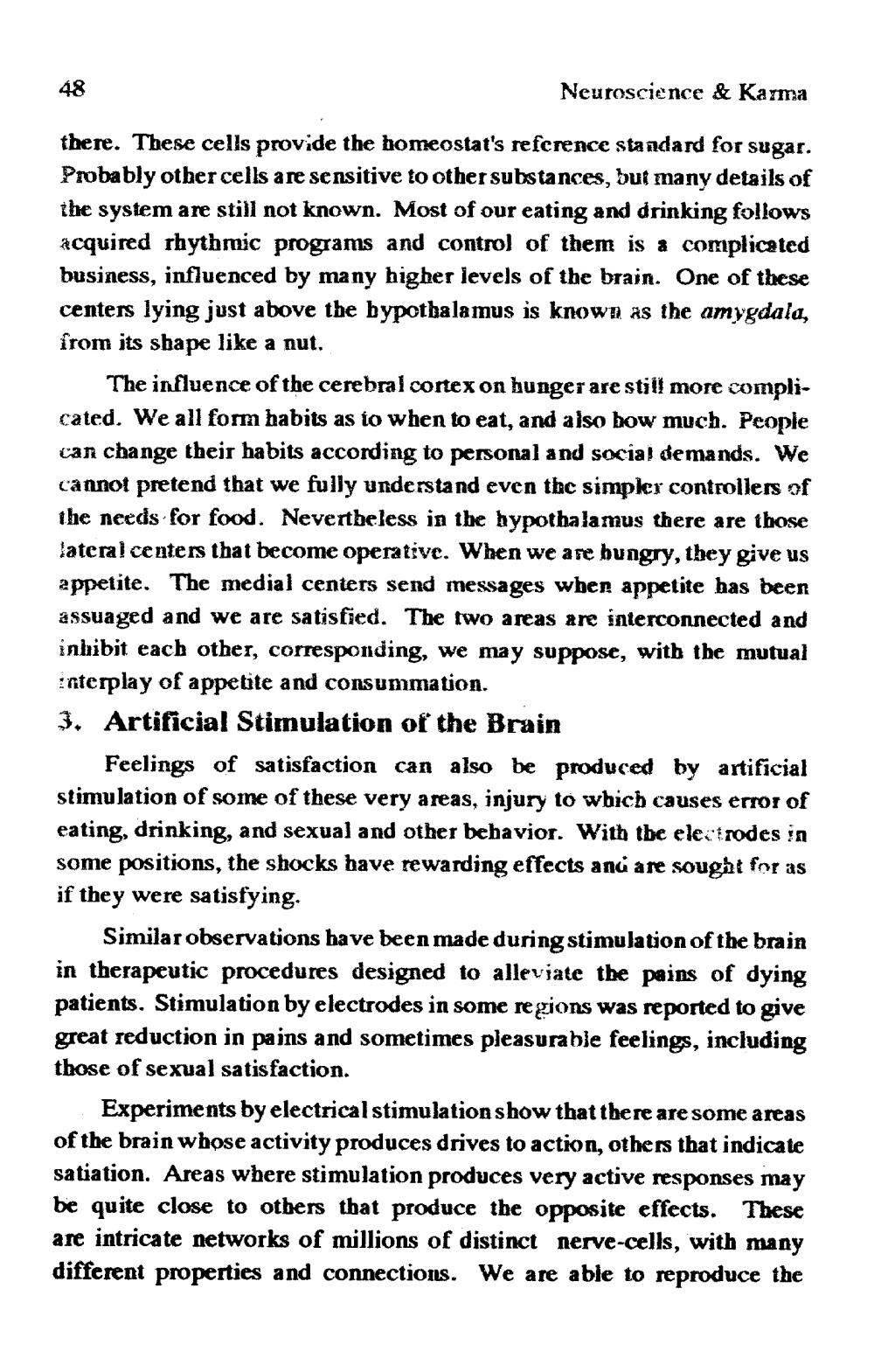________________
48
Neuroscience & Karma
there. These cells provide the homeostat's reference standard for sugar. Probably other cells are sensitive to other substances, but many details of the system are still not known. Most of our eating and drinking follows acquired rhythmic programs and control of them is a complicated business, influenced by many higher levels of the brain. One of these centers lying just above the bypotbalamus is known as the amygdala, from its shape like a nut.
The influence of the cerebral cortex on hunger are still more complicated. We all form habits as to when to eat, and also bow much. People can change their habits according to personal and social demands. We cannot pretend that we fully understand even the simpler controllers of the needs for food. Nevertbeless in the hypothalamus there are those lateral centers that become operative. When we are hungry, they give us appetite. The medial centers send messages when appetite has been assuaged and we are satisfied. The two areas are interconnected and inhibit each other, corresponding, we may suppose, with the mutual interplay of appetite and consummation. 3. Artificial Stimulation of the Brain
Feelings of satisfaction can also be produced by artificial stimulation of some of these very areas, injury to wbich causes error of eating, drinking, and sexual and other behavior. With the electrodes in some positions, the shocks bave rewarding effects and are sought for as if they were satisfying.
Similar observations have been made during stimulation of the brain in therapeutic procedures designed to alleviate the pains of dying patients. Stimulation by electrodes in some regions was reported to give great reduction in pains and sometimes pleasurable feelings, including those of sexual satisfaction.
Experiments by electrical stimulation show that there are some areas of the brain whose activity produces drives to action, others that indicate satiation. Areas where stimulation produces very active responses may be quite close to others that produce the opposite effects. These are intricate networks of millions of distinct nerve-cells, with many different properties and connections. We are able to reproduce the




